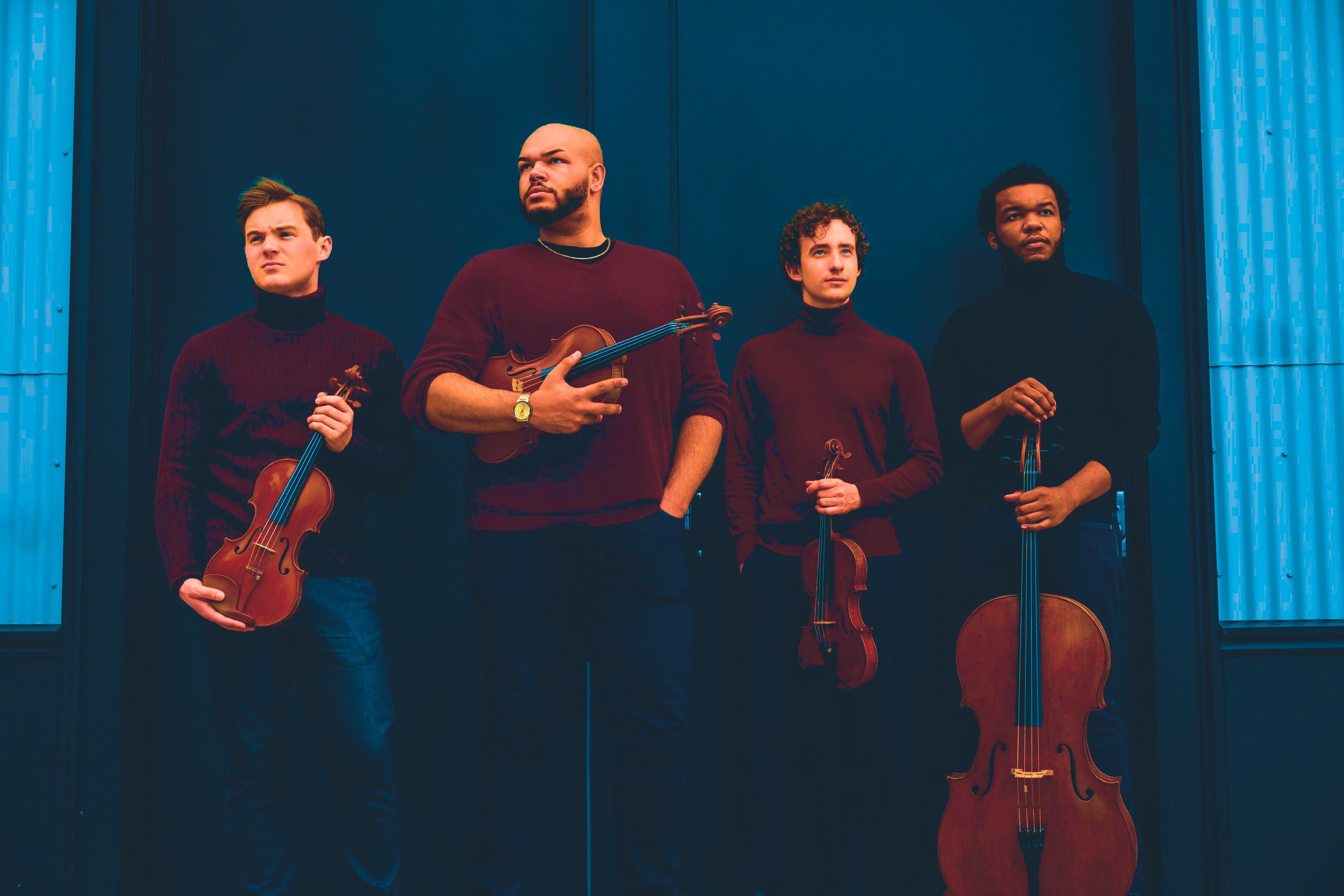By Jay Harvey
November 30, 2023
Rarely does an encore confirm with such insight a performer's artistry as in Wednesday's debut appearance here of the Isidore String Quartet under Ensemble Music Society auspices. You could see the value in how the group uses the first fugue in J.S. Bach's "Art of Fugue" as a way to reconnect in rehearsal with its characteristic identity and in sound checks before concerts. (It must be a successful habit: The Isidore this year won an Avery Fisher Career Grant, and last year the Banff International String Quartet competition in Canada.)
Isidore Quartet
That's the rationale that cellist Joshua McClendon offered the capacity audience at the Indiana History Center. The successive entries of the four instruments (which is also the arrangement used by Neville Marriner and the Academy of St. Martin-in-the-Fields in a controversial recorded orchestration of Bach's final work) prioritizes mutual listening from the first note onward in each line. Also, the focus on minimal vibrato that has come to be universal practice in Bach performance was elaborately sustained in the program's major work, Beethoven's String Quartet in A minor, op. 132.
Resting on the historic fulcrum of its third movement, the work memorializes Beethoven's struggle with illness as he composed it in the mid-1820s. The anxiety occasioned by poor health and the struggle toward recovery, crowned by pious thanksgiving, suggests that the restraint should be projected non vibrato. The score has the direction sotto voce at the start (a musical direction that is known in English-language theater as "stage whisper"). The Isidore used that intimate direction as a guide to the whole movement. That non vibrato requires extraordinary efforts to synchronize tuning and balance, without vibrato's usual aid of widening the amplitude of the pitch to resolve any wavering and then toward unified intonation.
Achieving that, along with first-class unanimity of tempo and phrasing, made the Isidore's interpretation moving and capable of sustaining the audience's interest and absolute attention. The other four movements amounted to much more than a framework for the Molto adagio - Andante ("Heiliger Dankgesang").The Isidore's gift for embracing variety and knitting it into a cohesive whole was immediately evident in the way it handled the divided nature of the opening movement and its balance of two contrasting themes.
This expanse of expressiveness had been exercised in a piece by Beethoven's most influential predecessor when the program opened with Haydn's Quartet in C major, op. 20, no. 2. This ensemble's performance maximized question-and-answer aspects of the music, or, to use a later formulation of musical dialogue, call-and-response.
It was evident that the breadth of nuance the Isidore commands allows it to give a firm, unified account of the softest side of the dynamic spectrum. That comes to the fore here in the composer's more explicit use of the sotto voce direction: in the finale, the "stage-whisper" level becomes nearly unbearable in music that delays its climax until near the end. These musicians were certainly up to the mark in the delayed-gratification department. But the payoff was no less rewarding.
The contemporary work (a piece written for the Ying Quartet in 2012) was String Quartet No. 2 ("Awakening") by Billy Childs, a musician distinguished in both classical music (composition) and jazz (piano). The work has a distant link to Beethoven's op. 132 insofar as a health crisis and its positive resolution informs the whole.
The work's three movements detail the composer's journey from learning about his wife's pulmonary embolism ("Wake Up Call") through an agonizing wait once he'd reached the hospital ("The White Room") to the couple's coming to terms with the unsettling event and finding a new basis for their bond once the woman recovered ("Song of Healing"). Childs uses a range of extended techniques (extended from those available to the program's other two composers) to paint a picture of the three scenarios. The Isidore's performance showed its ability to master the independence of the four parts and come together creditably to show that even the greatest moments of stress can cohere in retrospect and be artistically transformed.

